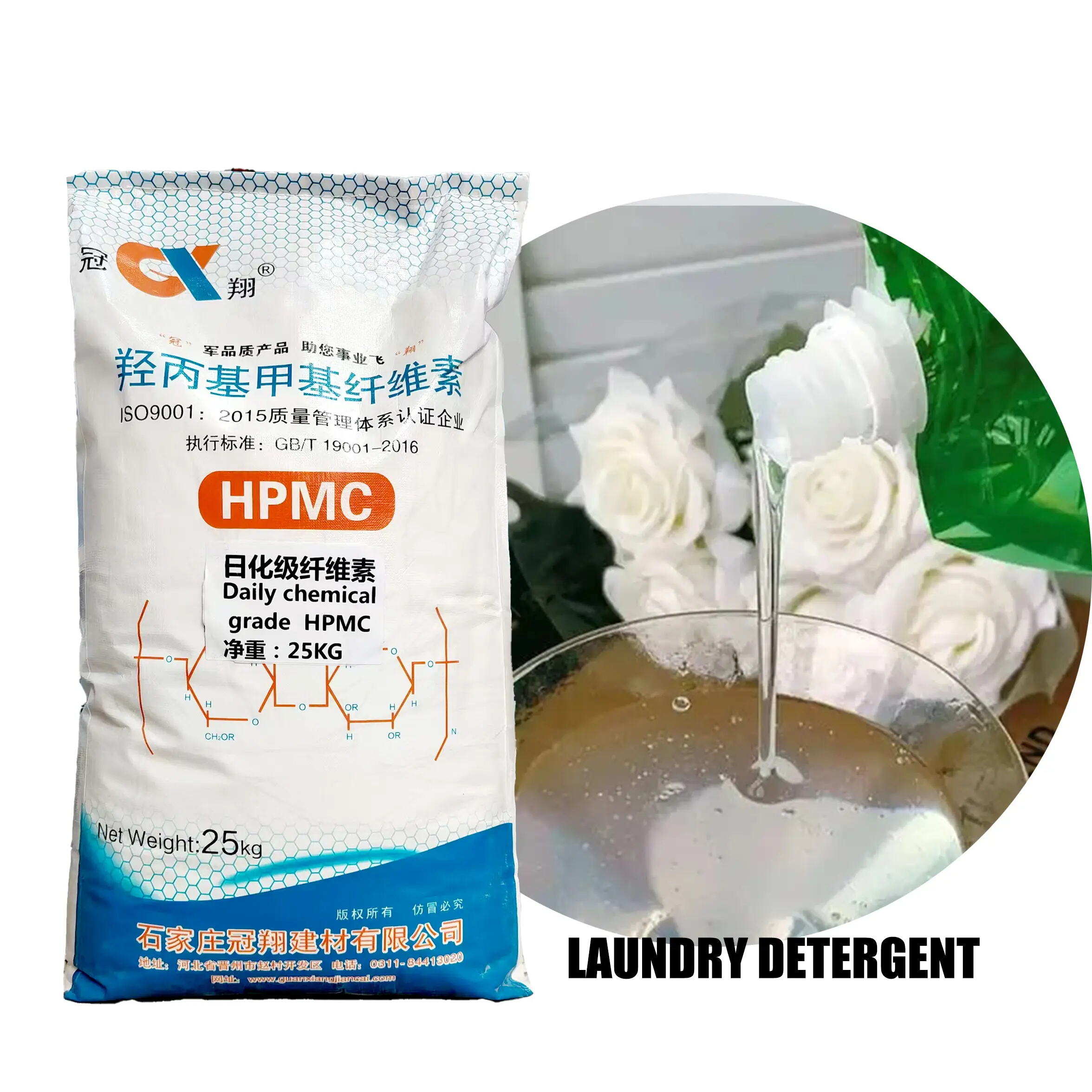Proprietates Chimicae Principales de Hydroxypropyl Methylcellulose
Aqua Retentio Capacitatem in Scientia Materialium
Hydroxypropyl-methylcellulose, vulgo HPMC nota, praecipue pro sua aquam retinendi facultate conspicitur. Hoc ipsum eam rem praecipuam in aedificiis perficiendis atque in medicamentorum compositione reddit. HPMC structura eam aquam in systemate materiae cuiuscumque includendam efficaciter capiunt, idque diutius hydrationem conservat. Cum aedificatores cementum cum HPMC permixtum sunt, tota mistura in applicatione facilius tractabilis fit. Experimenta demonstrant HPMC additionem hydrationis indices inter 20 ad 30 percenta augere. Hoc igitur significat structuras diutius firmas manere postquam compositae sunt, quod evidenter magni momenti est quotienscumque aliquid aedificandum sit quod saecula superare debeat.
Thermogelling Comportamentum pro Emittendo Regulando
Quod facit HPMC praeminere est quomodo forma mutatur cum calefactum est, quod remedium efficacius facit ad liberandum medicamenta lente. Cum temperatura super 37°C ascendit, substantia haec ex liquido in gelidum vertitur. Haec transformatio medicamentis permittit lente et paulatim liberari. Investigatores reperiunt quoddam gelidum HPMC speciale absorptionem medicamenti augmentare usque ad dimidium magis quam pilulae vel capsulae communes. Propter utilitatem in variis medicamenti administrationis modis, multi HPMC putant rem magni momenti esse ad remedia moderna promovenda.
Melioratio Rerum Constructurarum Perfacultatis
Melioratio Operimenti Molis et Resistentiae ad Fissuras
Hydroxypropyl methylcellulosae additio, seu HPMC breviter, vere differentiam facit in modo quo operatur mortarium in constructionibus. Cum aedificatores HPMC in mortario suo miscent, apponere et formare facile videtur dum in locis laborant, quod tempus universum servat. Mirabile in HPMC est quomodo aquam retinet magis quam mortarium commune. Hoc fissuras praeventare iuvat quia materia bene conditur nec nimis contrahitur, quod saepe problemata postea creat. Investigatio per varia constructionis spatia ostendit mortaria cum HPMC fere 40% fortiora esse cum flectuntur aut sub onere sunt, comparata cum formulis traditis. Combinatio facilis tractationis post mixionem et diuturnae fortitudinis significat plures aedificatores nunc HPMC necessariam pro omni seria aedificatione aestimare.
Cementis Hydrationis Processus Optimizare
Hydroxypropyl-methylcellulose (HPMC) verum interest qualiter cementum hydratatur. Compositiones HPMC continent rationem de aquae distributione et retentione per tempus coagulationis. Quod tandem conspicimus sunt microstructurae densiores in materia, quod meliorem vim generalem significat. Experimenta in industria monstrant HPMC compositionibus fortitudinem augeri posse circa 25% post tempus coagulationis diem viginti octo. Quo maior vis materiae sub pressione, diutius structurae sine problematis subsistunt. Non solum vires citae meliorantur, sed etiam haec ratio optimis usus maintenance onerum minuitur in posterum pro multis aedificandi negotiis. Aedificatores in omnibus a domibus parvis ad vias magnas tractandis HPMC in compositionibus includere solere ad meliores effectus consequendos quam methodi traditae.
Applicationes pharmaceuticae HPMC
Liberatio Tardata Medicamenti in Formulis Tabulettarum
Hydroxypropyl methylcellulose (HPMC) iam saepe adhibetur ut additamentum in tabulis conficiendis, adiuvans medicamenta diutius efficacia manere postquam sumpta sunt. Cum in liquores ventriculi et intestini inciderit, HPMC stratam quandam protectivam circum medicamentum interius creat. Hoc significat remedicamentum lente in corpus liberari paulatim, non omne simul, ut diutius ubi necesse est operetur. Investigatio monstrat ut, cum HPMC in formulis suis includitur, quaedam tabula diutius usque ad 12 horas integras operari possint. Magna differentia haec est pro patientibus qui medicamenta sua crebro per diem sumere debent. Pro quibusdam generibus medicamentorum, ut iis quae ad altam sanguinis pressionem vel dolorem chronicum curant, haec liberatio lenta iuvat quantitatem idoneam medicamenti in sanguine constanter manere sine fluctuationibus.
Stabilizatio Cremorum et Unguentorum Topicorum
Cum creantur cremae et unguenta, hydroxypropyl methylcellulose (HPMC) fungit officio stabilisatoris, quod vere differt in modo quo haec producta sentiuntur et cohaerent. Quod mirum est, HPMC stratam gelidam protectivam super applicationes cutis creat, qua ex causa maior stabilitas obtinetur et facilius in superficiem spargitur. Plurimi hoc amant quod sine ulla tenacitate post se relicta lepide applicatur. Alius emolumenti modus memorandus est, quomodo medicamentum ipsum aeque distribuitur per totum productum HPMC adhibito. Haec distributio aequa iuvat remedium melius operari tempore longiore. Secundum relationes industriae, circiter 30% plurium clientium satisfactionem pro his productis cum HPMC esse auctam testantur, propter ipsas emendationes texturae. Itaque, etsi HPMC necessitatem medicinalem certe implet, praeterea consumatori aliquid praestantioris offert – experientiam iucundam in applicatione, quae eos rursus revocat.
Munus in Cibariae Industriae Innovatione
Texturae Emendatio in Subole Minime Oleosa PRODUCTS
Cum agitur de innovando in industria cibaria, Hydroxypropylis Methylcellulosa seu HPMC magnam interest in modo quo producta exilis in ore sentiuntur. Haec res mirabiliter valet utraque ratione tamquam emulsum et crassatorem, adiuvans fabricatores creare cibos qui sapore pingues sunt et specie boni, sicut eorum pares pingues, tamenque salubria conservantur. Anni iam multis mercaturae cibariae HPMC usae sunt quod permittit eas creare cibos quos homines libenter edunt, potius quam paenitendum de butyro aut natare recusato. Quaedam studia indicare videntur HPMC additum caloricum quantitatem minuere circiter 20 percento, nihil tamen siccum aut elasticum efficiendo. Id significat ut emptores id quod optant ex cibis nutritionis gratia consequantur, simulque eum familiaris et satisfaciens morsus quem cum recipis traditis associamus obtineant.
Per Film-Formandam Vitae Terminum Producere
Qualitates HPMC in formando filmo diuturnam ciborum pereuntium novam rationem afferunt ut diutius recentes maneant. Ubi applicatur, munimenta creantur quae minuunt desiccationem dum cibum conservant. Artifices panificii praecipue hanc rem probant quod texturam calidam recentiter ex clibanis productam diutius conservat, processum indesideratum inaridationis tardans quem omnes nimis bene novimus. Ex variis laboratoriis cibariis constat cibos HPMC tractatos fere 25% diutius servari quam alii, licet eventus secundum conditiones custodiae variant. Non solum perditio ciborum prohibetur, sed etiam manufactores maiorem utilitatem capiunt dum cibos transportant et vendunt, quod diutius in mercatis vendibilis manent nec qualitate amissa.
Profectus in Tegumentis Industrialibus cum HPMC
Impedire Depositum Pigmentorum in Picturiis
Hydroxypropylis Methylcellulosae, saepe HPMC appellata, praecipuam partem gerit in indutriis tecturae pigmentis sedimentis in fundo vasorum picturae obstans. Quando pigmenta irregulariter sedimentantur, pictura in diversis partibus aeque non efficitur. Pictores hoc intellegunt, quia parietes maculati apparent, nisi color aeque distribuatur. Facultas pigmentorum suspensionem conservandi magnopere valet ad effectum ut superficies pictae diutius absque evanescendo vel lineis formandis manent. Investigatio indicat HPMC adiectio ad mixtiones picturae sedimentationem coloris minuere circiter 15% comparata cum compositionibus vulgaribus. Hoc fortasse parvum videtur, sed in locis commercialibus ubi magnae superficies tegendae sunt uniformiter, haec emendatio significat superficies diutius recentes et professionales visu manere menses non solum septimanas.
Adhaesionem in Superficiebus Non Porosis Augens
HPMC praestantissime implet quomodo tecturae adhaerescant superficiebus non porosis. Proprietates huiusmodi eum praecipue utilem reddunt in variis generibus materialium, ut metallorum et plasticorum superficies quae in manufacturis reperiuntur. Quod HPMC praestare videtur, est eius facultas crassitudinem tecturae moderari dum applicatur, quod meliorem superficiei expolitionem et levius diffundendum per formas intricatas efficit. Ex recentibus studiis et datis industrialibus patet, tecturas continentes HPMC fortius adhaerescere circiter 15-20% in hisce materialibus difficilibus. Melior adhaesio significat tecturas diutius durare sine exfoliis aut exsquamations, etiam sub asperis conditionibus ambientalibus. Multi manufactores emendationes notabiles in productorum durabilitate nuntiaverunt postquam HPMC in compositionum suarum processus introduxerunt.

Producti Sustentabiles
Alternativae Biodegradabiles Polymeris Syntheticis
Hydroxypropyl-methylcellulose, seu HPMC breviter, locupletatur locum substituti viridis pro his plasticis syntheticis, quae omnes sciunt esse noxia planetae, quod sponte dissolvitur tempore. Atqui pleraeque syntheticae solum in crepitaculis et oceani acervis congeruntur, HPMC autem profecta e plantis venit, quod significat minorem inopem nostris systematis relicta. Quod rem vere praestantem reddit est quomodo penitus evanescat post usum in variis industriae, quae res crebritur magis magna, dum conantur homines reperire options virides. Recens investigatio edita monstrat HPMC re vera iuvare minuere problemata de plasticis inutilibus, idcirco sapientem electionem pro manufactoribus creandis rebus quae non diu manebunt postquam abjiciuntur.
Reductio Imprimis Carbonicae in Fabricatione
Usus HPMC in fabricando opus adhibetur ad minuendam emissionem carbonis et convenit cum eo quod mundus conatur adipisci in sustentatione. Cum fabricatores ad HPMC vertunt, re vera operationes suas melius administrant, quod energiam minus consumi et vestigium carbonis contrahitur. Acta industriae monstrant quod societates quae ad formulae HPMC migrant saepe reductionem gasorum serra inter 30% et 50% videant comparatas cum vetustis materialibus. Huiusmodi reductiones valent magno opere ad protegendam nostram ambientem dum etiam adiuvant commercia ad permanendum congruentibus cum his regulis semper angustius clausis quae circa mutationem climatis cotidie renovantur.
Saepe Interrogata Quaestiones
Quid est Hydroxypropyl Methylcellulose (HPMC) usus?
Hydroxypropyl Methylcellulose in variis industriis ut constructio, pharmaceutica, cibus, et tecturae industriales adhibetur propter proprietates chemicas unicas sicut retentionem aquae, gellificare thermale, modificationem texturae, et adhaesionem meliorem.
Quomodo HPMC tractabilitatem mortarii meliorat?
HPMC tractabilitatem mortarii meliorat capax aquae retinendae augendo, applicationem et manipulationem in loco faciliorem efficiens et ad resistentiam contra rimas meliorem conferens.
Num HPMC censeri potest materies amico ambiente?
Ita, HPMC censetur materies amico ambiente quod ex plantis sit et biodegradabilis, ideoque pedetentim minuitur respectu polymerorum syntheticorum.
Quomodo HPMC in industria pharmaceutica confert?
In industria pharmaceutica, HPMC adhibetur ad liberationem prolongatam medicamenti in formulationibus tabularum promovendam et ad stabilizandos cremas et ungenta topicos, efficacitatem therapeuticam et texturam producti meliorans.
Cur HPMC in industria alimentaria utitur?
HPMC in industria alimentaria ad modificationem texturae in productis pauperibus in pinguedine et ad vitam conservandi per proprietates suas filmi formandi extendendam, satisfactionem consumptorum augendam et iniuriarum cibariarum minuendas.
 EN
EN
 AR
AR
 CS
CS
 DA
DA
 NL
NL
 FI
FI
 FR
FR
 DE
DE
 EL
EL
 HI
HI
 IT
IT
 JA
JA
 KO
KO
 NO
NO
 PL
PL
 PT
PT
 RO
RO
 RU
RU
 ES
ES
 SV
SV
 IW
IW
 ID
ID
 SR
SR
 SK
SK
 UK
UK
 VI
VI
 HU
HU
 TH
TH
 TR
TR
 AF
AF
 MS
MS
 CY
CY
 IS
IS
 BN
BN
 LO
LO
 LA
LA
 NE
NE
 MY
MY
 KK
KK
 UZ
UZ


